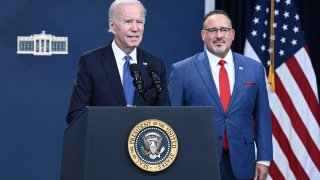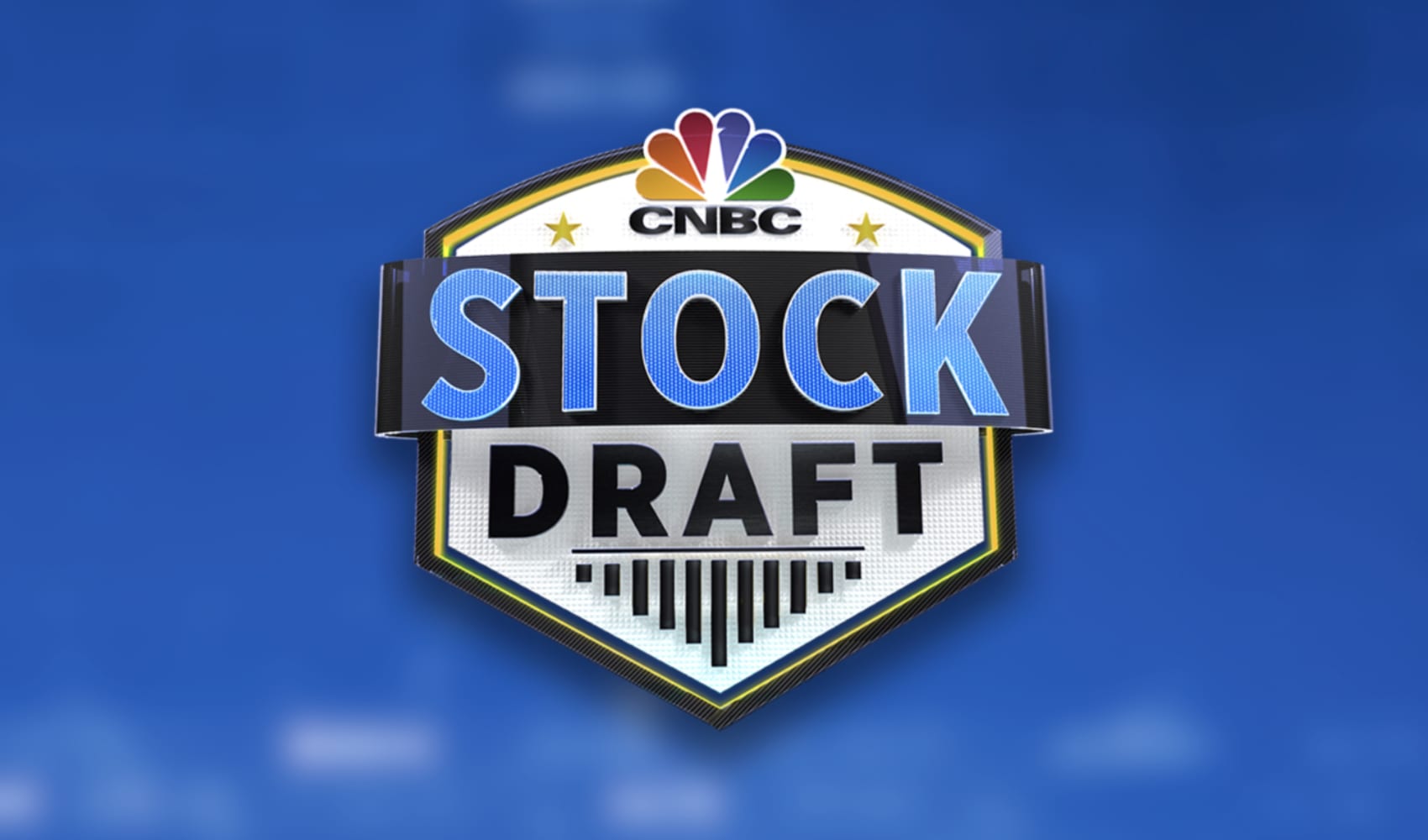
The Biden administration announced Friday it would be automatically forgiving student debt for 804,000 federal borrowers as a result of fixes to income-driven repayment plans.
The borrowers — who will be notified of their relief in the coming days, the administration said — will have a total of $39 billion in debt forgiven just weeks before they were set to begin making payments again.
"For far too long, borrowers fell through the cracks of a broken system that failed to keep accurate track of their progress towards forgiveness," Secretary of Education Miguel Cardona said in a statement.
The new wave of relief brings the Biden administration's amount of total student debt forgiven — which has included Public Service Loan Forgiveness, disability discharges and relief for defrauded students — up to more than $116.6 billion dollars.
Get Southern California news, weather forecasts and entertainment stories to your inbox. Sign up for NBC LA newsletters.
Student debt relief advocates celebrated the administration's announcement, and now call on officials to keep the momentum going, especially given last month's defeat of Biden's broader student debt forgiveness program in the Supreme Court.
"It is a huge victory that nearly a million borrowers who have been trapped in decades of never-ending payments will finally get the relief Congress intended," Persis Yu, deputy executive director and managing counsel at the Student Borrower Protection Center said in a statement.
"Our student loan system is riddled with structural incompetence, and vulnerable, low-income, and Black and Bbrown borrowers face the harshest effects. Now, our leaders need to finish the job."
Money Report
Here's who should expect to see relief.
Borrowers with older loans finally see forgiveness
Under IDR plans, borrowers become eligible to have any remaining balances forgiven after 20 or 25 years of repayment, depending on the loan type and when it was taken out.
The regulation stipulates that borrowers make 240 or 300 monthly payments to qualify for forgiveness. But those payments were notoriously tracked inaccurately, the Department of Education says, leaving the majority of borrowers unable to get the relief they worked so hard for.
The 804,000 borrowers who will see their balances cleared as a result of this action will have become eligible for forgiveness after receiving credit for previous periods of repayment that weren't originally counted in their monthly payment total. Borrowers should have received credit for payment during the following periods:
- Any month they were in a repayment status regardless of loan and repayment plan type, and whether the payment was late or partial
- Any forbearance period lasting 12 or more consecutive months
- Any month they had loans in deferment (except for in-school deferment) prior to 2013
- Any month they received an economic hardship or military deferment on or after Jan. 1, 2013
Payment periods prior to a loan consolidation will also count toward forgiveness.
How will I know if my loans are being forgiven?
The Department of Education says it will begin notifying borrowers today that they qualify for forgiveness. You don't need to take any further action if you're eligible. Loan discharges will begin 30 days after you're notified, and your servicer will inform you that your debt has been discharged.
If you're eligible for forgiveness, your repayment will be paused until your discharge is processed. If you opt out of the discharge, you will be required to return to repayment when it resumes in October.
Student debt forgiveness is not taxable at the federal level through Dec. 31, 2025. A handful of states — Arkansas, California, Indiana, Minnesota, Mississippi, North Carolina and Wisconsin — typically consider forgiven student debt as taxable income, so residents there may owe income tax on their relief.
DON'T MISS: Want to be smarter and more successful with your money, work & life? Sign up for our new newsletter!
Get CNBC's free Warren Buffett Guide to Investing, which distills the billionaire's No. 1 best piece of advice for regular investors, do's and don'ts, and three key investing principles into a clear and simple guidebook.






